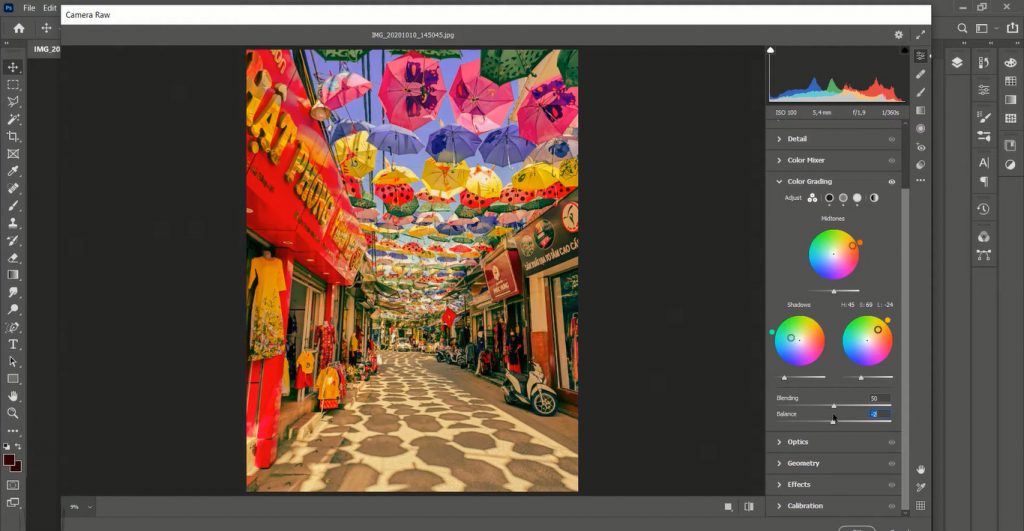
- How to open adobe camera raw how to#
- How to open adobe camera raw full#
- How to open adobe camera raw professional#
For example, there’s an Exposure slider that you drag left and right to adjust the exposure of your image. Most of its controls are in the form of sliders or drop-down menus.
How to open adobe camera raw full#
It won’t have the same power, as there isn’t the same degree of data to work with, but you can do so by going to Filter > Camera Raw Filter in Photoshop.Ĭamera Raw is a full non-destructive image-editing app. Note: Camera Raw is also available as a Photoshop filter, so you can use its editing tools on your regular images. For the purposes of this article, I’m going to focus on the Photoshop plug-in version. Just open your image in one of those apps instead, and you’ll be good to go. If you use Lightroom CC or Lightroom Classic, all the editing controls in the Develop module are powered by Camera Raw. If you already have Photoshop running, the simplest way is to go to File > Open, navigate to the RAW file that you want to edit, and then click “Open.” In other words, to access Camera Raw, open a RAW file in Photoshop however you normally like to. If you open a RAW image (regardless of the manufacturer’s format) in Photoshop, it will automatically start.
How to open adobe camera raw how to#
How to Open Photos in Camera RawĬamera Raw is a plug-in built into Photoshop. If you’re serious about taking great photos, then this kind of editing control is essential. Resetting the white balance with JPGs is not always a trivial task and can be hard to get right. Using Camera Raw enables you to completely reset the white balance, or how blue or yellow the whole image appears. Highlights starting to blow? You can fix that, too.Īnd it’s not just the lights and the darks that you can control, but the color as well. Shadows a bit too dark? You’ve got the image information to brighten them up.

You can use all that extra data to make non-destructive edits. The advantage of using Camera Raw over, say, letting your smartphone do its thing, is that you’re in control of the process. These kinds of edits are next to impossible to make with JPGs-at least, if you want something that looks good. It’s available as a plug-in in Photoshop and After Effects, can be accessed from Bridge, and is what runs under the hood in Adobe Photoshop Lightroom. It’s often called a digital darkroom because it has the same role that a traditional darkroom does in film photography: taking your rough negatives and turning them into usable photos.
How to open adobe camera raw professional#
RELATED: What is Camera Raw, and Why Would a Professional Prefer it to JPG? Camera Raw Is a Digital DarkroomĪdobe Camera Raw is the processing engine used by Adobe’s apps to edit and convert or develop RAW files. When you shoot RAW, however, you have to do it yourself-which is where Camera Raw comes in. When you shoot JPGs with your smartphone or camera, the device does all the processing for you. The biggest downside of RAW files is that they need to be processed into more widely supported image formats (mostly JPGs, sometimes TIFFs) before you can do much with them. However, Adobe’s Digital Negative (DNG) format is slowly becoming a recognized standard. For example, Canon’s is CRW, and Nikon’s is NEF. Most camera manufacturers have their own specific RAW format. You won’t be able to upload it straight to social media, but you’ll have a lot more latitude when you edit.

Instead of shooting usable but compressed JPGs, your camera will save a data file that includes all the image information when you shoot RAW. It’s still using all the raw data to make the image, but you just don’t have access to it afterward.īut what if you want all that photo information so that you can use it when you edit your images? Well, that’s where RAW photos come in. If your smartphone or camera is set to shoot JPGs, however, when you click that shutter button, it processes all that data down to a small image file that you can send to your friends or post on Instagram, and it throws away everything that it didn’t need. Instead, the sensor “sees” heaps more data about the light levels and colors in the scene than it can possibly record as a single compressed image file. When you take a photo with a digital camera, it doesn’t see the world as a JPG.
RAW Photos Redux Even iPhones can now capture both RAW and JPG files.


 0 kommentar(er)
0 kommentar(er)
